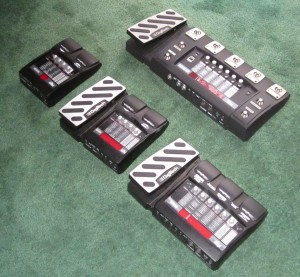
The RP500’s EQ is Even Deeper Than I Thought
Now that I’ve finished the updates to my patch set for the Digitech RP500, I’m converting my personal patches–the ones I use for specific songs in live performance–from the RP355 to the RP500. In the process, I’ve discovered yet another cool thing about the way the 500 handles EQ.

I noted in a previous post that the RP500 includes amp-modeled EQ, which gives you another level of realism (and ease of setup) in creating patches. In my latest (v17) set for the RP500, which is now shipping, I’ve basically substituted the 500’s amp-modeled EQ for the global EQ that’s available in the 155/255/355. In part, that’s because I did most of the editing for the v17 set from the RP500’s front panel, which at the time seemed a convenient way to work.
Last night, I started converting my live-performance-song-specific patches, and I did the editing from Xedit instead of the RP500’s front panel. And I discovered something amazing. The RP500’s global EQ is MUCH more flexible than the EQ in the RP355 and down.
Specifically, the 500 lets you do two things that you can’t do in the 355:
Put these two things together, and you can augment the amp-modeled EQ in very cool ways. For example, you can pump up the amp-modeled bass EQ on a Fender Bassman amp model, to better emulate the sound of a typical harp player’s EQ setup; then you can use the global EQ to eliminate all the frequencies below 80 hZ, so your cool Bassman setup won’t collide with the bass guitar and kick drum in your band.
One way I’m using the EQ tools is to shape the frequencies of the sounds I use in my looped pieces, so I can carve out specific spaces for each of the layers I put in my loops. So, for example, if I’m using two bass layers in a loop, I can make one of them really deep, and use the other to fill in the low-midrange space. Or if I have one sound that I’m using for rhythm, I can pull down the treble frequencies broadly to leave room for the lead harp. Or I can carve out the midrange frequencies on an organ sound to leave space in the middle for a chunky auto-wah sound. Using the global EQ this way really helps to create loop layers that fill the frequency spectrum without overloading it.
Did I mention that I’m really liking the RP500? You bet I am. Stay tuned for more adventures with this cool device.
Related Posts
Leave a Reply
You must be logged in to post a comment.
WHAT’S NEW
Categories
- Audio/Video
- Blog
- Blue Future
- Digitech RP Tricks and Tips
- Discography, CDs, Projects, Info, Notes
- Featured Video
- For the Beginner
- Gallery
- Hunter's Effects
- Hunter's Music
- Huntersounds for Fender Mustang
- Meet the Pros
- More Video
- MPH: Maw/Preston/Hunter
- My Three Big Contributions
- Player's Resources
- Pro Tips & Techniques
- Recommended Artists & Recordings
- Recommended Gear
- Recorded Performances
- Reviews, Interviews, Testimonials
- The Lucky One
- Uncategorized
- Upcoming Performances
- Zoom G3 Tips and Tricks